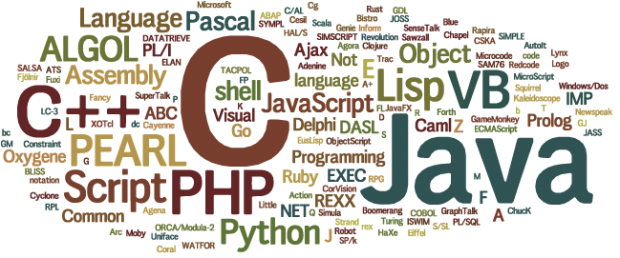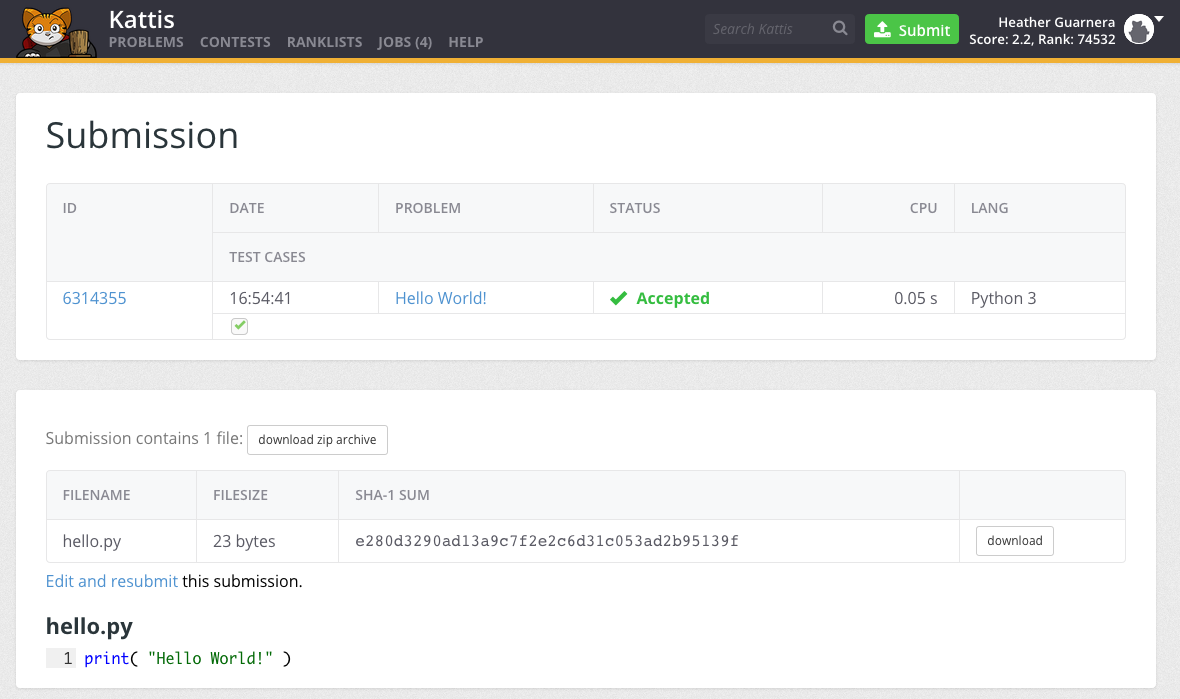CS 222

Programming Languages
Optional Extra Credit
You can gain up to 3% added on to your final grade by successfully completing the following tasks.
-
Create an account with your Wooster email on Kattis. In your profile, specify “The College of Wooster” as your institution.
- Consider the following huge list of problems. Choose one (or two) with difficulty >= 2. You may not choose the “Hello World!” problem for credit, but you can try it to understand how Kattis works. You’ll each problem using any language OTHER than C/C++/Python. Use this time to explore a new language or get more practice with Java!
- Pick 1-2 unique problems from the list that you want to solve, with difficulty >= 2.
- Put your name, section, the problem title, and a URL to the problem description on this sign up sheet to claim it. You can claim up to 2 problems at a time.
- Your problem must be unique, meaning that no one else in the course has already signed up for it.
- I suggest you sign up for a problem before you begin working on it, to guarantee that you’re the only one working on it.
- Note: You can always change your choice later, provided that no one else has picked your next choice.
- Independently solve your chosen problem in Kattis.
- Click ‘Submit’
- Choose any language OTHER than C/C++/Python and click ‘Submit’.
- Type your code in the solution (depending on the problem, you might want to test in your editor first)
- Click ‘Submit’
- It will take you to the Submission window, where your solution will be tested by Kattis. To be eligible for any points, your solution must pass all tests. This means it will show as ‘Accepted’ under the ‘Status’ column.
- Note: You will not receive any help on solutions – this should be your own independent work.
How to submit
For each problem, submit the following documents to Moodle:
- A single screen shot of the resulting Submission screen on Kattis which shows your name in the top right corner and that the python file was accepted.
- A source code file consisting of your source code used to solve the problem.
- A word document / text file containing 2 paragraphs that describes what you learned and how you solved the given problem.
For example, if I claimed the Hello World problem, I would submit the following documents to Moodle:
- The source code file,
problem1.py, with contents:print( "Hello World!" ) -
A screen shot containing the following proof of tests passing (note name in the top right corner)

-
A word document describing concepts learned and any challenges along the way: (not much to describe here since it’s just a single print statement, and so your description will be longer, but here’s a general idea of what I’m expecting):
I learned about print statements in Python 3. As it turns out, calling
print("text")will print out to the terminal whatever text string is inside parenthesis. Theprintfunction will also take more arguments, if I want to print multiple items.It took a while for me to figure this out because I am accustomed to Python 2’s print statement which has a different format. With Python 2, the same function would be written as:
print "text".
If you solve one problem, you’ll submit three documents (1 python file, 1 screen shot, 1 word document) to Moodle. If you solve two problems, you’ll submit six documents to Moodle.
Grading
Each claimed problem that is successfully and independently solved will count towards 1.5% additional credit on your final grade, up to 3% maximum (i.e., 2 problems maximum). You must have claimed your unique problem of choice on the sign up sheet and it must pass all tests on Kattis.